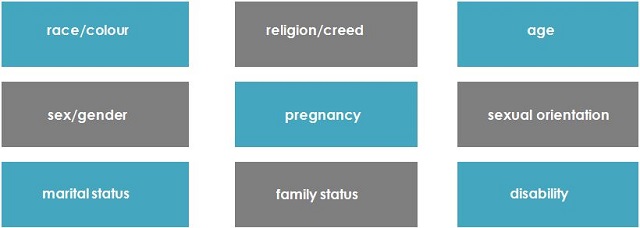FTR Nexus
Setting up Shop in Canada? What U.S. Employers Need to Know About Canadian Human Rights Law
Date: December 6, 2017
While Canada and the United States are alike in many respects, there are a few key differences in human rights law that U.S. employers should be aware of if you are considering buying, selling or operating a business in Canada.
Four Key Features of Canadian Human Rights (Anti-Discrimination) Law
“Anti-discrimination” law in the United States is known as “human rights” law in Canada. All jurisdictions in Canada have enacted human rights legislation which may vary in some aspects but which share fundamental characteristics. In this article, we highlight four key features of Canadian human rights law that may be of interest to U.S. employers.
-
Access to Human Rights Adjudication
Two models of human rights adjudication exist in Canada:

The Human Rights Commissions are often referred to as the “Gatekeeper Model” because they determine which complaints shall, or shall not, proceed to adjudication. This model is utilized in all but two provinces and one territory.
The Direct Access Model exists only in British Columbia, Ontario and Nunavut. Complaints are submitted directed to the adjudicative body without the intermediary of a commission.
Ontario moved from the Gatekeeper Model to the Direct Access Model in 2008. The Human Rights Tribunal of Ontario receives complaints directly and has established its own processes and procedures to mediate or adjudicate claims. The Human Rights Commission remains in place but its primary focus is now on promoting compliance with the Human Rights Code through, for example, public education and policy development.
Timelines for filing complaints from the date of the alleged contravention or, where continuing, the last instance of the alleged contravention vary from jurisdiction to jurisdiction:
- 6 months – British Columbia
- 1 year – Canada (Federal), Alberta, Ontario, Manitoba, New Brunswick, Nova Scotia, Newfoundland and Labrador, P.E.I and Saskatchewan
- 2 years – Quebec, the Northwest Territories and Nunavut
- 18 months – Yukon
There may be various exceptions to these time limits depending on the circumstances of the alleged contravention.
-
Prohibited Grounds
The characteristics upon which discrimination is prohibited are set out in human rights legislation. Across Canada, both federally and provincially, the legislation prohibits discrimination based on:

Other grounds may vary depending on the jurisdiction. For example, several jurisdictions prohibit discrimination based on gender identity/gender expression. Some provinces include source of income as a grounds of discrimination, and some protect political beliefs.
-
Accommodation and Family Status
Human rights legislation in Canada gives employees a right to “reasonable accommodation” to the point of “undue hardship.” Though the undue hardship standard does not require employers to establish that accommodation is impossible, the standard is very high. The duty to accommodate applies to an employee’s needs; it does not apply to an employee’s preferences.
Significantly, there is both a substantive and a procedural aspect to the duty to accommodate and both can result in a remedy of financial damages.
A current “hot topic” in the human rights area is accommodation of “family status,” a prohibited ground of discrimination across Canada. Courts and adjudicators interpret this term liberally and it has been found to apply to both childcare and eldercare. For example, employers have been held in breach of their accommodation duties where:
- an employee who was caring for his dependent and disabled mother was terminated for failure to regularly attend at the office
- an employee was not provided with the appropriate shift schedule to be able to look after her children
- an employee was not provided with appropriate relocation expenses which related to his obligation to care for his ailing mother-in-law
- the employer changed the hours of an employee returning from maternity leave that made her childcare arrangements “unsustainable.”
The test for family status accommodation continues to evolve, and prudent employers adopt best practices when considering individual requests for such accommodation.
-
The Reach of Human Rights Law
Human rights protection applies not only in the employment context but extends to service providers as well as to independent contractors.
For example, a breach of the Ontario Human Rights Code has been found where:
- a service provider failed to take prompt action to deal with a situation where a customer was racially harassed by another customer
- a landlord failed to give additional notice to tenants as religious accommodation.
Employers must also be aware that the existence of an “independent contractor” relationship does “exempt” that relationship from human rights law. The Human Rights Tribunal of Ontario has taken a purposive approach in determining whether an employment relationship exists and has held that the Human Rights Code applies to various workplace relationships, including sub-contractors and independent contractors.
Whether you are buying, selling or operating a business in Canada, Hicks Morley can help.
The article in this client update provides general information and should not be relied on as legal advice or opinion. This publication is copyrighted by Hicks Morley Hamilton Stewart Storie LLP and may not be photocopied or reproduced in any form, in whole or in part, without the express permission of Hicks Morley Hamilton Stewart Storie LLP. ©

